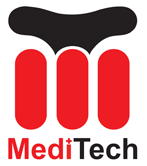Le camere bianche sono essenziali nelle industrie che richiedono un controllo rigoroso sui contaminanti come i prodotti farmaceutici, biotecnologia, e produzione elettronica. Mantenere la pulizia di una camera bianca è fondamentale per garantire la qualità e la sicurezza dei prodotti o dei processi che si svolgono al suo interno.
Comprendere le classificazioni delle camere bianche
Le camere bianche sono classificate in base al numero e alle dimensioni delle particelle consentite per metro cubo. Acquisisci familiarità con la classificazione specifica della tua camera bianca, poiché le procedure di pulizia possono variare in base al livello di pulizia richiesto.
Assembla gli strumenti e le attrezzature giuste
Per pulire efficacemente una camera bianca, raccogliere i prodotti necessari per la pulizia, Compreso:
- Mop e secchi compatibili con le camere bianche
- Salviette senza pelucchi
- Aspirapolvere con filtri HEPA
- Detergenti e disinfettanti compatibili con le camere bianche
- Dispositivi di protezione individuale (DPI) come i guanti, copriscarpe, retine per capelli, e tute
Preparare un piano di pulizia
Sviluppare un piano di pulizia dettagliato che delinei tutte le attività di pulizia richieste, frequenze, e responsabilità. Includere istruzioni specifiche su come pulire le diverse aree, superfici, e le attrezzature all'interno della camera bianca.
Preparati
Prima di entrare nella camera bianca, assicurati di indossare adeguatamente i DPI appropriati, compreso un camice compatibile con le camere bianche, guanti, copriscarpe, e retine per capelli. Lavare e asciugare accuratamente le mani per eliminare eventuali contaminanti.
Seguire le giuste procedure di pulizia
1. Inizia con un lavaggio a secco: Utilizzando un aspirapolvere con filtro HEPA, iniziare rimuovendo le particelle sciolte, polvere, e detriti dal pavimento, muri, e superfici. Prestare particolare attenzione agli angoli e alle aree difficili da raggiungere.
2. Pulizia a umido: Inumidire una salvietta o uno spazzolone privo di lanugine con un detergente o un disinfettante compatibile con le camere bianche. Seguire le istruzioni specifiche per la diluizione e l'applicazione. Pulisci tutte le superfici, comprese le pareti, soffitti, e workstations. Assicurati di pulire dall'alto verso il basso, Passando dalle aree meno critiche alle più critiche.
3. Concentrati su superfici critiche: Superfici critiche, come cappucci di flusso laminari, armadi di sicurezza biologica, e attrezzatura, richiedono maggiore attenzione. Pulire accuratamente queste superfici, Garantire che non ci siano residui o contaminanti lasciati alle spalle.
4. Sostituire regolarmente gli strumenti di pulizia: Man mano che gli strumenti di pulizia diventano sporchi, Sostituili con quelli puliti per evitare di ridistribuire i contaminanti. Smaltire correttamente le salviette usate e le teste di mop per prevenire la contaminazione incrociata.
Formare ed educare il personale
Allena regolarmente il personale della camera pulita su tecniche di pulizia adeguate, l'importanza della pulizia, e i potenziali rischi associati alla pulizia impropria. Assicurarsi che comprendano il piano di pulizia, protocolli, e l'importanza di mantenere un ambiente cleanroom.
 Tamponi in schiuma per camere bianche, Tamponi in poliestere, Produttore di kit per la pulizia della stampante – Meditech
Tamponi in schiuma per camere bianche, Tamponi in poliestere, Produttore di kit per la pulizia della stampante – Meditech